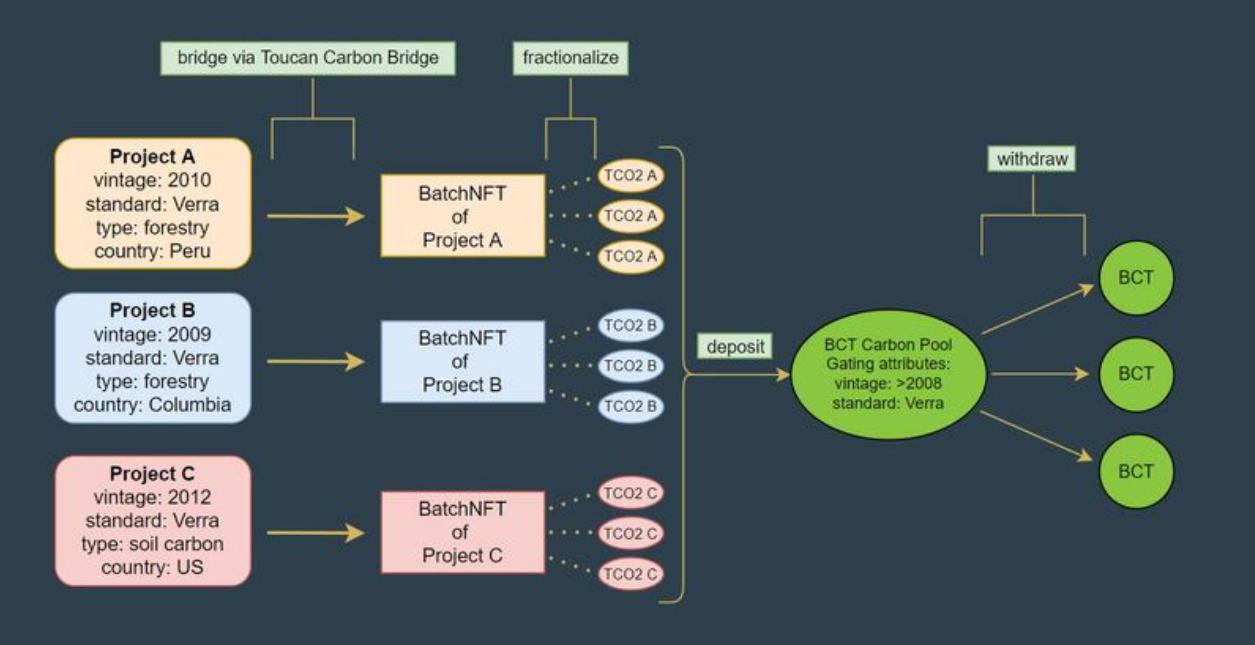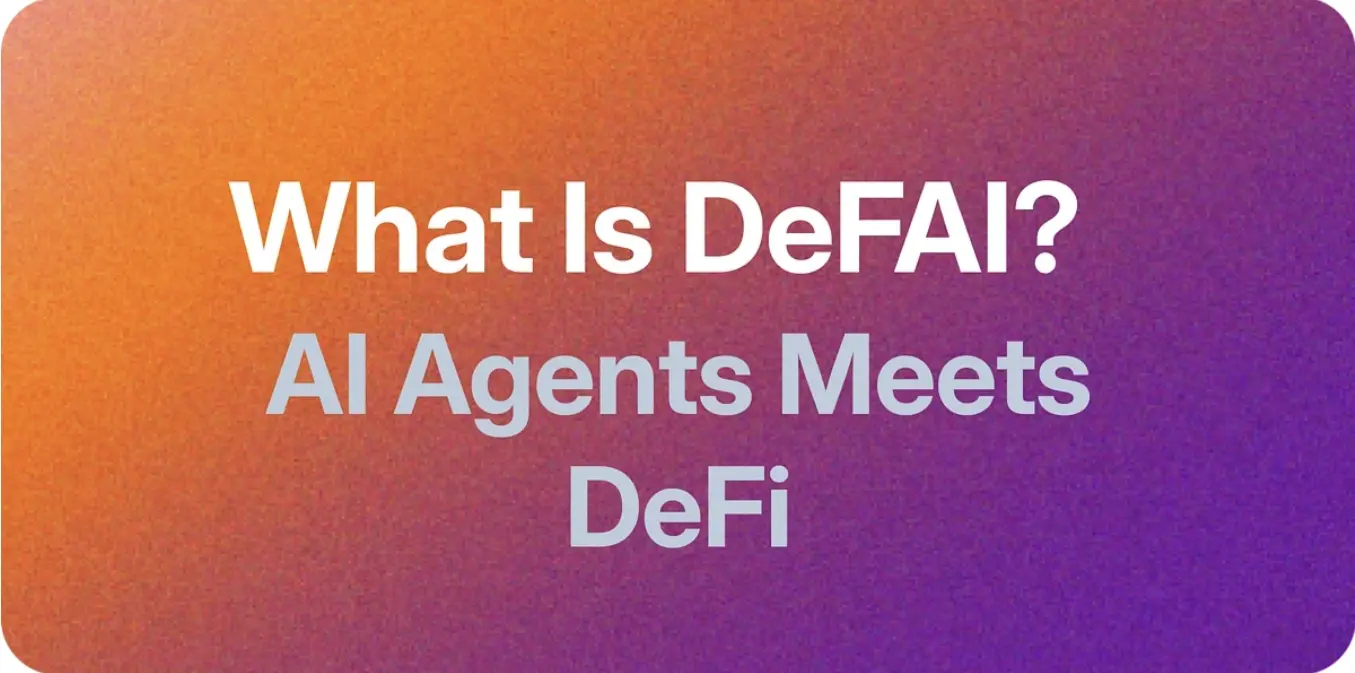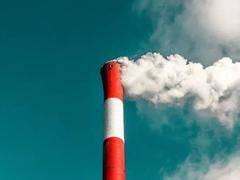How does the carbon trading market DAO organization Klima DAO operate?
Author: Wendy M, CoinGecko Researcher
Original Title: "What is Klima DAO and How Does it Work?"
Compiled by: Gu Yu, Chain Catcher
Recently, a new fork of Olympus DAO has emerged—Klima DAO—which has attracted attention by accumulating over $110 million in treasury assets in less than a month since its establishment. So what is Klima DAO, and how does it differ from other Olympus DAO forks?
In short, Klima DAO is a decentralized autonomous organization (DAO) and DeFi protocol aimed at promoting climate action through a carbon-backed algorithmic currency—its KLIMA token. Its goal is to encourage emission reductions by driving up the price of carbon assets.
However, before delving into Klima DAO, we must first familiarize ourselves with the carbon market.
Explanation of the Carbon Market
The carbon market is a trading market for carbon emission credits designed to provide economic incentives for emission reductions. Each credit represents the reduction or removal of 1 mtCO2e (1 metric ton of CO2 equivalent) from the atmosphere. This also includes carbon sequestered or avoided due to project implementation. There are two types of carbon markets—mandatory (or compliance) carbon markets and voluntary carbon markets.
Compliance carbon markets are legally binding programs that impose a maximum limit on total emissions and allow participants (such as countries/industries) to trade their emission allowances. Participants can profit by selling unused allowances to others who need additional allowances to comply with their own emission limits. Examples in this regard include the emissions trading systems in the EU, Australia, California, and British Columbia.
On the other hand, voluntary carbon markets (VCM) are technically unregulated. They are not overseen by the government but are managed by VCM standard administrators (such as Verra and Gold Standard). Unlike compliance markets, there is no cap on the number of carbon credits that can be issued or traded. Climate-positive projects generate "credits" for sale, while polluters purchase these credits to "offset" their emissions—the terms "credit" and "offset" are sometimes used interchangeably.
The most active buyers in the VCM are companies from large sectors such as energy, technology, and finance, as they attempt to achieve net-zero goals; however, individuals can also purchase credits to offset their emissions. Nevertheless, the use of VCM to address climate change has also drawn considerable criticism, particularly regarding the use of carbon offsets to greenwash corporate images or as a convenient substitute for actual emission reductions.
There is also much debate about the methods used to quantify sequestered or avoided carbon. Not all offsets are equal, and VCM may play a crucial role in providing key funding for climate-positive projects that are more transparent, robust, and yield real results. Regardless, while the scale of VCM operations is only a small fraction of the compliance market, it is a more flexible and globalized market that can operate according to user needs.
Now, let’s return to Klima DAO.
How Does Klima DAO Work?
Thus, Klima DAO is a protocol that seeks to drive climate action by accelerating the appreciation of carbon asset prices through its KLIMA token. Today, these assets refer to carbon credits traded in the VCM.
Klima DAO is a branch of the popular Olympus DAO protocol. Therefore, its monetary and economic policies are fundamentally similar, but there is a key difference.
In Olympus DAO, each OHM token is backed by 1 DAI, while each KLIMA token is backed by 1 BCT (Base Carbon Ton) token. To understand what BCT is, we must now delve into the Toucan Protocol.
Toucan Protocol
In a nutshell—Toucan Protocol is a project that brings carbon as a new monetary Lego block into Web 3.0, and BCT is one of these carbon currency Lego blocks. So how do Toucan Protocol and Klima DAO intersect?
First, carbon credits are purchased on the traditional carbon market through Verra. These carbon credits are then transferred from the traditional market and moved on-chain via the Toucan Carbon Bridge. The process of transferring legacy carbon credits on-chain through the Toucan Protocol is as follows:
First, a batch of carbon credits from a specific project and year is purchased from the traditional market. Then, these credits are transferred on-chain via the Toucan Carbon Bridge and transformed into "BatchNFT," which is an NFT containing details of the carbon sequestration or reduction project (such as type, year, location, carbon tonnage). The liquidity of the NFT is not very strong, so BatchNFTs are subdivided into fungible TCO2 tokens—where "T" stands for "toucan," "tonne," or "tokenized."
However, these fungible TCO2 tokens still contain metadata related to the BatchNFT from which they originated, so they are still not very liquid. To address this issue, "carbon pools" were created to deepen liquidity. These pools have gatekeeping standards that allow deposits of TCO2 that meet specific criteria. Depositors then receive fungible "carbon reference tokens," such as BCT in exchange, which represent 1 carbon token in the carbon pool.

Toucan's first carbon pool is the one currently associated with Klima DAO. It is called the "Base Carbon Ton" pool, and the fungible carbon reference token is called "BCT." The attributes of TCO2 in the BCT pool are 1) Verra verified and 2) years after 2008. Therefore, any user can deposit TCO2 tokens that meet these standards and receive fungible, more liquid BCT in exchange. Each BCT represents 1 TCO2 in the BCT pool, equivalent to reducing or removing 1 ton of carbon emissions from the atmosphere in the real world.
How to Participate in Klima DAO
To participate in Klima DAO, users first need to purchase BCT or KLIMA directly from SushiSwap on the Polygon network. To maximize benefits from using Klima DAO, users are encouraged to acquire KLIMA through its "joint curve" mechanism by depositing BCT or SushiSwap liquidity pool tokens BCT-USDC LP or BCT-KLIMA LP into the Klima DAO treasury in exchange for discounted KLIMA. Each bond has its own discount rate, depending on the treasury's demand for such assets.
Similar to Olympus DAO, when users stake KLIMA through Klima DAO to generate returns, they benefit, with an APY of approximately 37,000% at the time of writing. Currently, Klima DAO has successfully accumulated nearly 10 million BCT in its treasury.
How Does Klima DAO Plan to Address Climate Change?
Klima DAO aims to drive the appreciation of carbon credits in the VCM by purchasing and hoarding as many credits as possible from the market and locking them in its treasury. The project believes this could lead to a tightening of the supply of carbon credits, thereby driving up prices. Most importantly, it is expected that by 2030, the value of the carbon offset market will exceed $50 billion, so demand for credits is expected to increase. Currently, the total value of the VCM is slightly below the $1 billion mark.
Rising carbon pollution prices force the worst polluters—who traditionally rely on purchasing offsets to comply with voluntary emission targets—to take swift action to reduce emissions, or they may face negative impacts on their bottom line. More expensive offsets mean they can no longer escape the problem.
At the same time, more expensive offsets may also direct critical financing to sustainable development projects that genuinely address our environmental issues. As selling credits becomes more profitable, more expensive offsets also have the additional effect of encouraging the emergence of more climate-positive projects.
The founders of Klima DAO believe that a perfect currency should regenerate our planet by pricing carbon costs. In Klima DAO's model, more economic activity within the system increases the supply of KLIMA, which can only be minted when tokenized carbon is locked in its treasury. Non-"climate natives" may find it hard to see how important this support is, but it becomes clearer when they realize that carbon (or more specifically, the carbon content in the atmosphere) represents crucial things like climate stability or biodiversity. As we know, these are the very things that underpin life and society on Earth.
At the same time, individual environmental actions, such as shifting to a plant-based diet or reducing flights, often require sacrifices in convenience and provide no obvious benefits to those lacking intrinsic motivation to carry out these actions. Klima DAO offers a novel way to directly link climate action with users' economic interests—the more KLIMA tokens you own, the more carbon you lock, and the more rewards you earn through staking. Klima DAO aims to create a currency supported by environmental regeneration rather than resource extraction, which could lead to a significant shift in societal views on money.
However, given Klima DAO's lofty goals, there are naturally concerns about the mechanisms by which the project will achieve its objectives and whether they can produce the expected impact.
Discussion on Issues Regarding Klima DAO
While everyone has an impact on the environment, there is a growing understanding that the issues leading to climate change are fundamentally systemic. The clever multi-billion dollar marketing and lobbying efforts of large oil companies mislead and distract the public, sowing doubt about climate science and shifting the focus to individual carbon footprints while lobbying politicians to enact favorable laws. One of the key questions is whether VCM, based on the commitments of the same large industries and corporations, can truly make a significant impact?
As a result, there is skepticism about whether Klima DAO will work as intended. There are reservations and criticisms regarding VCM standard administrators (such as Verra). In particular, the methods used to calculate the number of credits that can be issued based on hypothetical carbon reductions or removals are often opaque and complex. Some of these issues arise simply from a lack of transparency or differing rigor among standard administrators.
For example, most offsets are generated by emissions "avoidance" projects (such as forest conservation), which are measured by comparing the avoided emissions to a calculated average "baseline deforestation rate," which can be somewhat arbitrary. When the average used does not account for significant differences, this method has proven harmful in significant incidence and instances of over-counting become a serious issue. These loopholes and shortcomings in carbon accounting methods create opportunities for "profit maximizers," and if selling credits becomes highly profitable, this situation could worsen.
Most importantly, the processes used to measure carbon stored in the natural environment also have inherent difficulties; this is not an exact science. Scientific estimates can vary widely, which only increases the uncertainty of how many carbon credits a project should be able to issue.
Fortunately, there is some evidence that VCM can still be used to compel companies to adopt and adhere to voluntary emission reduction targets. In recent years, VCM has seen unprecedented growth, even as the world faced an economic downturn triggered by Covid, indicating that even when reaching the bottom line, emission reduction commitments remain a priority. Since early 2020, over 200 companies have publicly committed to reducing emissions, signaling their dedication to addressing current and/or historical emissions issues, with 180 companies making commitments in 2021.
Companies can opt out of these commitments at any time, but they certainly face the risk of reputational damage due to strong public backlash. While these emission reduction commitments should adhere to science-based emission elimination strategies consistent with the Paris Agreement, it is not surprising to learn that companies do not fully comply with these commitments. The failure to achieve climate action ambitions is a widespread issue, and many companies may choose to purchase the cheapest carbon offsets from the market to claim they have achieved climate neutrality. Therefore, if VCM credit prices soar, companies will be forced to adapt by actually reducing emissions in their operations, as this may be cheaper than purchasing credits. However, the concern is that this could lead to rising costs, which would then be passed on to consumers.
In addition, companies may ultimately face the reality that they must do something about the climate crisis, as this requires their business to be future-facing, and voluntary carbon offsets provide a simplified way to fund climate-positive projects.
What Does Klima DAO Need to Succeed?
For Klima DAO to achieve long-term success, its KLIMA token needs to gain widespread adoption. The KLIMA token competes with other established cryptocurrencies (such as BTC, ETH, or even OHM) to become a widely accepted currency.
Moreover, the KLIMA token must be composable with other leading projects and DeFi protocols. The ability to use sKLIMA as collateral in other DeFi protocols will increase utility for KLIMA holders. Collaborations with other projects are also crucial for Klima DAO to benefit from network effects and establish its position in the crypto world.
Klima DAO's roadmap also includes plans to enhance the quality of carbon credits supporting the KLIMA token. Ultimately, BCT will diversify into various tokenized carbon pools of different project types and carbon impacts. This is important because not all carbon credits are equal. Carbon credits that support local community livelihoods and biodiversity conservation, among other benefits, are more valuable in the VCM. As certification standards improve over time, credits from later years are also generally considered more reliable. Carbon durability is also an important and more objective metric, where carbon that stays in the atmosphere longer (e.g., 1000 years vs. 100 years) holds more value.
In the long run, Klima DAO's priority is to achieve scalability. VCM is just a drop in the ocean of solutions needed to address climate change. Even between the two types of carbon markets, VCM pales in comparison to compliance markets. As of 2020, the compliance market was valued at $272 billion, with a trading volume of 10.3 billion allowances, while VCM was valued at less than $500 million, with a trading volume of 188 million credits (each allowance or credit equivalent to 1 metric ton of CO2e). Furthermore, in 2020, humanity emitted nearly 40 billion tons of CO2 equivalent.
If Klima DAO's VCM experiment proves successful, then addressing the compliance market seems to be the next logical step to effect more significant change to avert the trajectory of global warming. For this, there needs to be a bridging system similar to the Toucan Carbon Bridge for VCM credits for carbon allowances from compliance markets.
Conclusion
Klima DAO is undoubtedly one of the most ambitious crypto projects to date. Admittedly, in its current form, the project can only do so much to influence the trajectory of climate warming. It must be acknowledged that climate change can only be mitigated through deep emission reductions and comprehensive societal transformation, with high-quality offsets used only to balance unavoidable emissions.
Before concluding, it may be essential to accurately remember the reason for Klima DAO's existence and the risks humanity faces if it fails to achieve its climate goals. The Paris Agreement, signed in 2015, established a global framework to avoid dangerous climate change by limiting global warming to well below 2°C and striving to limit it to 1.5°C. According to the Intergovernmental Panel on Climate Change (IPCC), to achieve this goal, we need to reduce emissions by at least half by 2030 and achieve net-zero emissions by 2050. In contrast, our emissions have reached historic highs year after year, and we are teetering on 1.2°C of warming. While a small fraction of a degree may seem insignificant, the infographic below makes things clearer.

It is clear that there is significant danger if humanity fails. Climate change is a big problem that requires multiple solutions. While Klima DAO is certainly not a panacea, it could evolve into a powerful force to fund renewable energy projects—a feat that traditional governance and markets have failed to achieve even decades later. Time will tell whether Klima DAO can effectively scale and expand its reach, and if it truly aims to mitigate climate change—watching this project develop will be exciting.










